Perseverance Looks For Past Life on Mars, and Prepares for the Future
Through powerful imaging instruments, the rover Perseverance will prepare for a future when human life travels to Mars
In July, NASA launched the Perseverance rover into space on its way to Mars. The Perseverance will be the fifth rover to land on the surface of Mars when it arrives in February 2021, and its mission is more ambitious than any that have come before.
Previous Mars rovers (in addition to a variety stationary landers and orbiters over the years) have had a mission to explore. Snap some pictures, take some samples, look for evidence of water and life and so forth. Perseverance will do all those things as well, but whereas other missions focused on the exploration aspect, this rover has more grandiose designs:
Prepare for humans to land on Mars.
To accomplish this mission, Perseverance has some of the most advanced sensors and tools that humanity has ever sent into space.
Perseverance comes with its own drone helicopter, called Ingenuity, that will attempt the first flight on Mars. It will be the first ever drone to fly on a different planet. A tool called MOXIE will attempt to create oxygen from the Martian atmosphere, which contains mostly carbon dioxide. The oxygen can then theoretically be used as fuel for future landers to propel rockets off the planet back to earth, or maybe even breathable air for a possible human mission sometime in the future.
The hunt for life on Mars will continue with several tools that will be used to examine samples, looking for organic elements and minerals on the planet’s surface. One, called SuperCam, will use cameras, lasers and spectrometers to hunt for organic elements, especially at a distance from the rover. Another, SHERLOC (Scanning Habitable Environments with Raman & Luminescence for Organics & Chemicals), will be used to identify elements close to the rover and will work through the day and night examining samples. SHERLOC will even test small portions of spacesuit material to see how future suits might handle the harsh Martian environment.
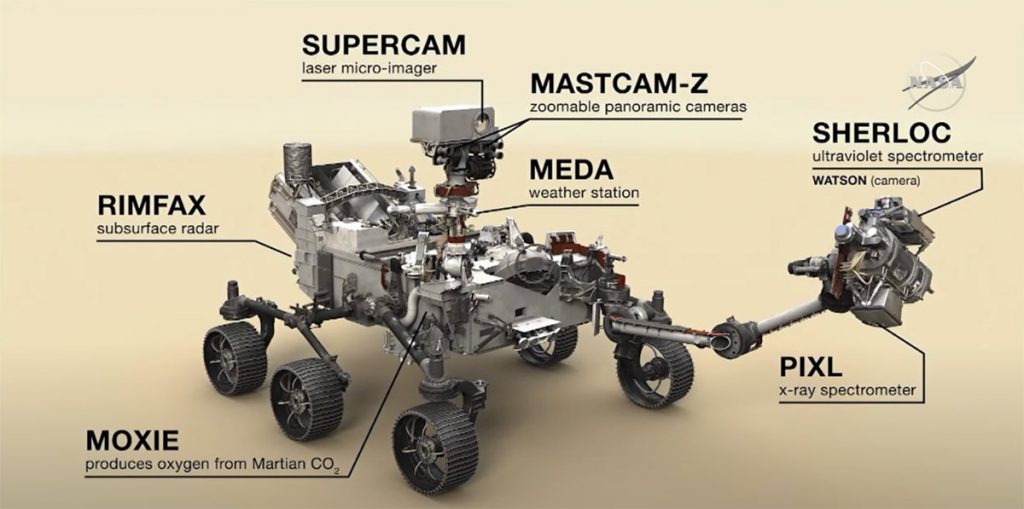
SuperCam: The Superhero Camera
According to NASA, SuperCam will be used, “to identify the chemical composition of rocks and soil, including their atomic and molecular makeup.” It will do this via remote optical measurements and laser spectroscopy. Located on the rover’s long-nest mast (its “head”), SuperCam will fire a laser to study targets “smaller than a pencil point.” This capability will let Perseverance study spots that it cannot reach with its arm.
SuperCam’s primary duty is the hunt for life (or where life used to be). It wants to find rocks and chemical signatures that were formed or changed by water on Mars long ago. It’s expected that the study of different rock and soil types will provide signs of historic microbial life.

SuperCam will also be part of the mission to gather data that can be used for future life on Mars. It will study dust on the Martian surface looking for hazards that could be harmful to humans. It will also study “how atmospheric molecules, water ice and dust absorb or reflect solar radiation.” This kind of data may help predict Martian weather.
“SuperCam” is a superhero for making discoveries on Mars! Its cameras have super vision, and its spectrometers have super senses for identifying the chemical makeup of Martian rocks and “soil” (regolith). SuperCam can see across great distances to measure targets not reachable by the Perseverance rover’s other tools. It’s an improved version of the ChemCam laser on the Mars rover Curiosity: Additionally, SuperCam can analyze minerals and molecules, and capture color images instead of black-and-white only.
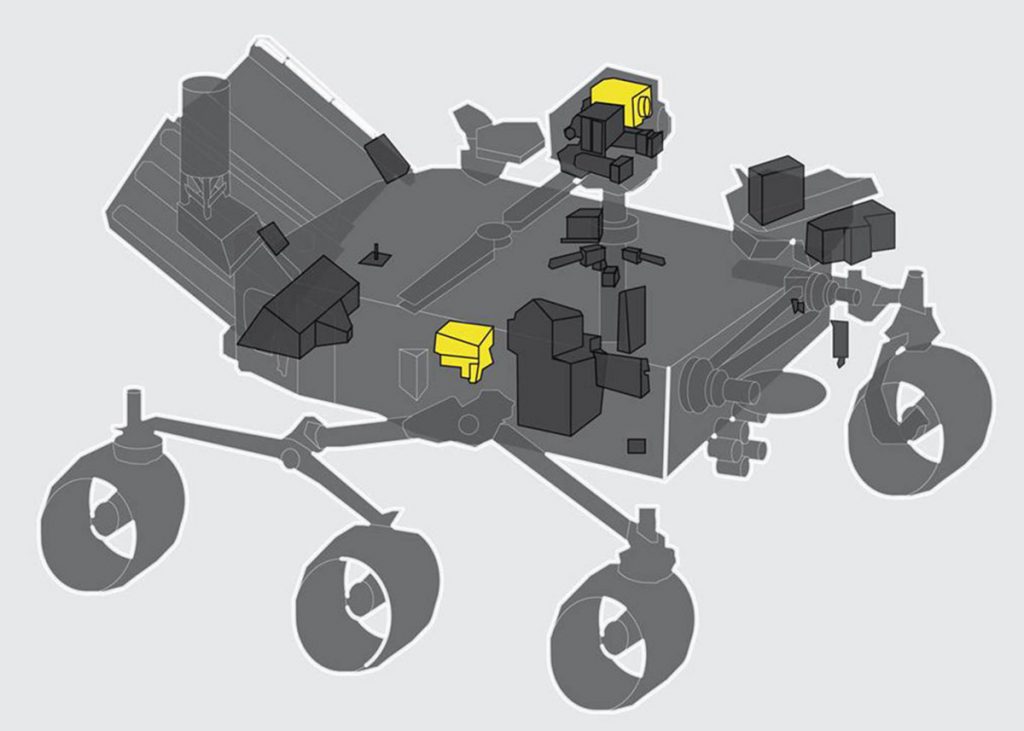
SuperCam builds on the success of ChemCam in a variety of ways. To measure elemental composition of rocks and soil, SuperCam integrates the remote Laser Induced Breakdown Spectroscopy (LIBS) that was successfully deployed with the ChemCam. LIBS uses a 1,064 nanometer laser to investigate targets up to seven meters away.
SuperCam will also perform Raman spectroscopy, Time-Resolved Fluorescence spectroscopy (TRF), and Visible and InfraRed spectroscopy (VISIR) to study the chemical makeup of rocks further 12 meters from Perseverance to look for targets of potential further study. It will also be able to acquire high-resolution images of samples from a distance using a remote micro-imager (RMI).
SHERLOC: Perseverance’s Magnifying Lens
SuperCam is used to identify and study targets at a distance, while its sister component—SHERLOC—will be the rover’s primary tools for up close examination. SHERLOC is mounted on the turret end of Perseverance’s robotic arm. The rover will place SHERLOC about 48 millimeters above its target, close enough to get all the tiny details, but far enough to keep Perseverance from contaminating the sample. Like SuperCam, SHERLOC will be used to look for signs of water and past microbial life on the surface of Mars.
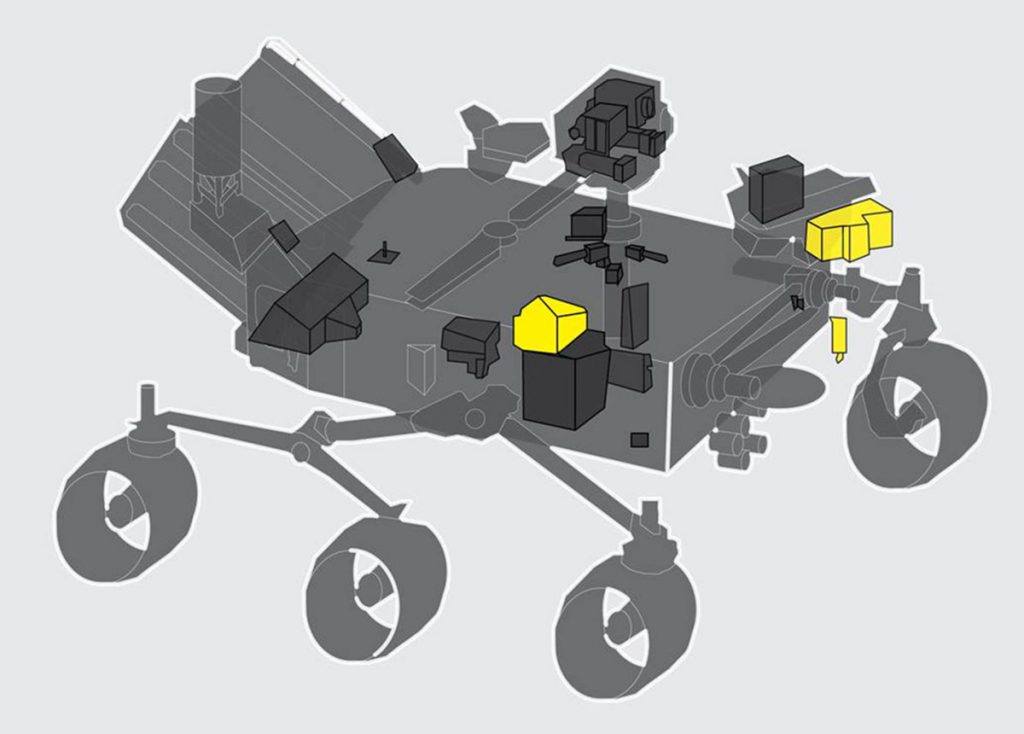
SHERLOC is a “Deep UV (DUV) resonance Raman and fluorescence spectrometer utilizing a 248.6-nm DUV laser and <100 micron spot size. The laser is integrated to an autofocusing/scanning optical system, and co-boresighted to a context imager with a spatial resolution of 30 µm,” according to NASA. It operates over a 7 x 7-millimeter area with the use of an internal scanning mirror and has a 500-micron depth of view.
In addition to its spectroscopic capabilities, SHERLOC has a “second eye” called, appropriately, WATSON (Wide Angle Topographic Sensor for Operations and eNgineering) which shares SHERLOC’s components for scientific operations and imaging.
“SHERLOC’s investigation combines two spectral phenomena, native fluorescence and pre-resonance/resonance Raman scattering,” says NASA. “These events occur when a high-radiance, narrow line-width, laser source illuminates a sample. Organics that fluoresce absorb the incident photon and reemit at a higher wavelength. The difference between the excitation wavelength and the emission wavelength indicates the number of electronic transitions, which increases with increasing aromatic structures (i.e. number of rings). This phenomenon is highly efficient, with a typical cross section 105x greater than Raman scattering, and enables a powerful means to find trace organics.”
Teledyne: Powering Discovery on Mars
Teledyne is no stranger to the search for life on the red planet. The ChemCam on the Curiosity rover that landed on Mars in 2012 employed a CCD42-10 sensor. Both SuperCam and SHERLOC are equipped full frame architecture CCD42-10 sensors from Teledyne e2v. Back illumination technology, in combination with an extremely low noise amplifier, make the device well-suited to the most demanding applications, including spectroscopy as performed by the SuperCam and SHERLOC.
SHERLOC’s ultraviolet spectrometer is equipped with lenses and mirrors produced by Teledyne Acton Optics, part of Teledyne Princeton Instruments. These lenses and mirrors were incorporated into the Conditioning Optics Modules of the system, lenses for the Context Imager Lens Assembly, and broadband mirrors for the Spectrometer Module.
Teledyne’s DALSA’s Bromont semiconductor foundry also built the CCD image sensor for SkyCam, a tool on Perseverance that will be used to study the Martian atmosphere. The CCD was designed by NASA’s Jet Propulsion Laboratory. SkyCam is one of the radiation and dust sensor instruments that will monitor sky brightness at different times over a wavelength and geometry range to characterize dust, solar radiation and thermal radiation.
Perseverance’s power system, the Multi-Mission Radioisotope Thermoelectric Generator, power system was designed in part by Teledyne Energy Systems.
The First Step to Putting Humans on Mars
Perseverance could be the trailblazer that ultimately helps humans step foot on Mars.
“We’re very much thinking about how Mars could be inhabited, how humans could come to Mars and make use of the resources that we have there in the Martian environment today,” said Katie Stack Morgan, deputy project scientist for the rover at NASA’s JPL. “We send our robotic scouts first to learn about these other places, hopefully for us to prepare the way for us to go ourselves.”
The mission has changed. Rovers of the past used components for research and exploration. With Perseverance, the next generation of components will be used to not only learn, but to lay the groundwork for future endeavors where the robotic scouts can be accompanied by human scientists.
The Perseverance rover is scheduled to launch from Space Launch Complex 41 at NASA’s Kennedy Space Center as early as July 30. It is set to land at Mars' Jezero Crater on Feb. 18, 2021.



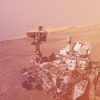 Looking at Mars With the Right Kind of Eyes
Looking at Mars With the Right Kind of Eyes 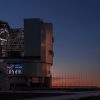 How the Very Large Telescope Uses Direct Imaging to Find Exoplanets
How the Very Large Telescope Uses Direct Imaging to Find Exoplanets 